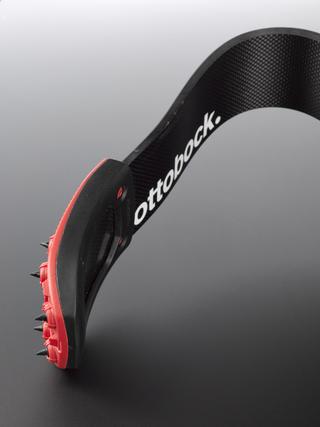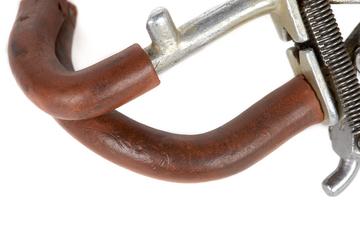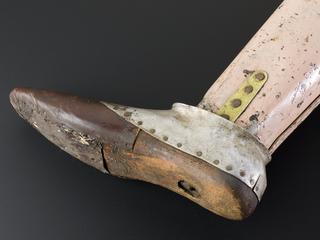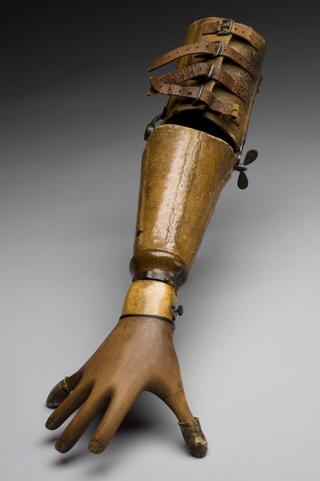


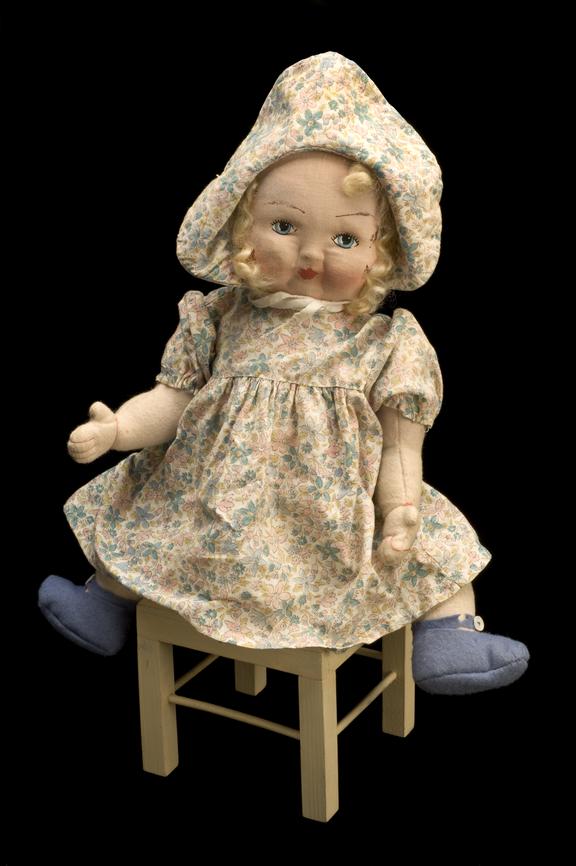
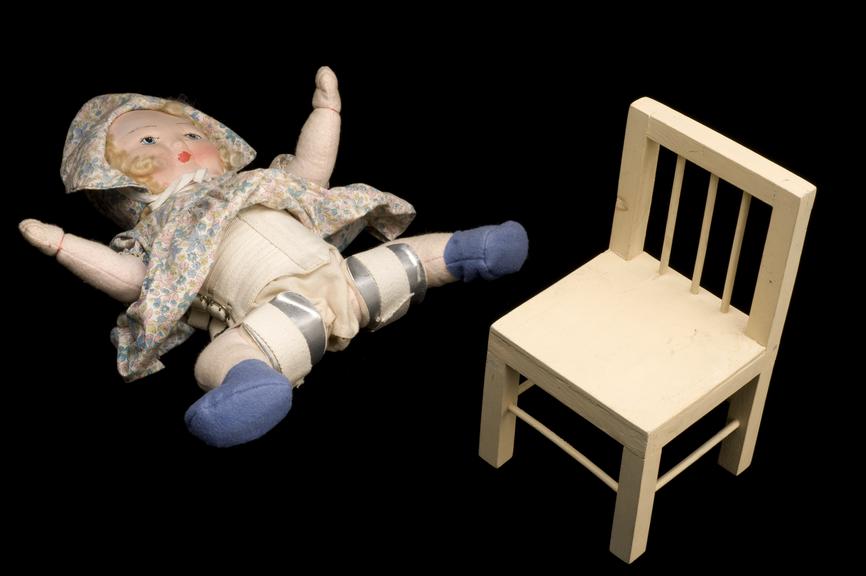
Fabric infant doll, wearing a Denis Browne type splint for congenital dislocation of the hips, probably used to demonstrate prospective orthopaedic treatment, with wooden model chair, photograph of child patient, and one large and one small descriptive labels, from the Lord Mayor Treloar Orthopaedic Hospital, Alton, Hampshire, England, 1940-1960.
This doll is one of a number used at the Lord Mayor Treloar Orthopaedic Hospital, in Alton, Hampshire, England, to show parents, and in some cases children, the treatment the child will undergo. Founded in 1908, the hospital was originally opened to provide specialised treatment for children with orthopaedic conditions, mainly caused by tuberculosis and, later, polio.
A Denis Browne-type splint/harness is applied to the hips to help correct hip dysplasia – which is usually diagnosed only in young babies. It occurs when the top of the leg bone is not properly located in the hip socket or not located where the hip socket is expected to develop. The splint is named after its inventor, Sir Denis Browne (1892-1967), an Australian paediatric surgeon.
Details
- Category:
- Orthopaedics
- Object Number:
- 2002-377
- Measurements:
-
overall: 440 mm x 320 mm x 140 mm, .68kg
- type:
- teaching doll
- credit:
- North Hampshire Hospitals NHS Trust
